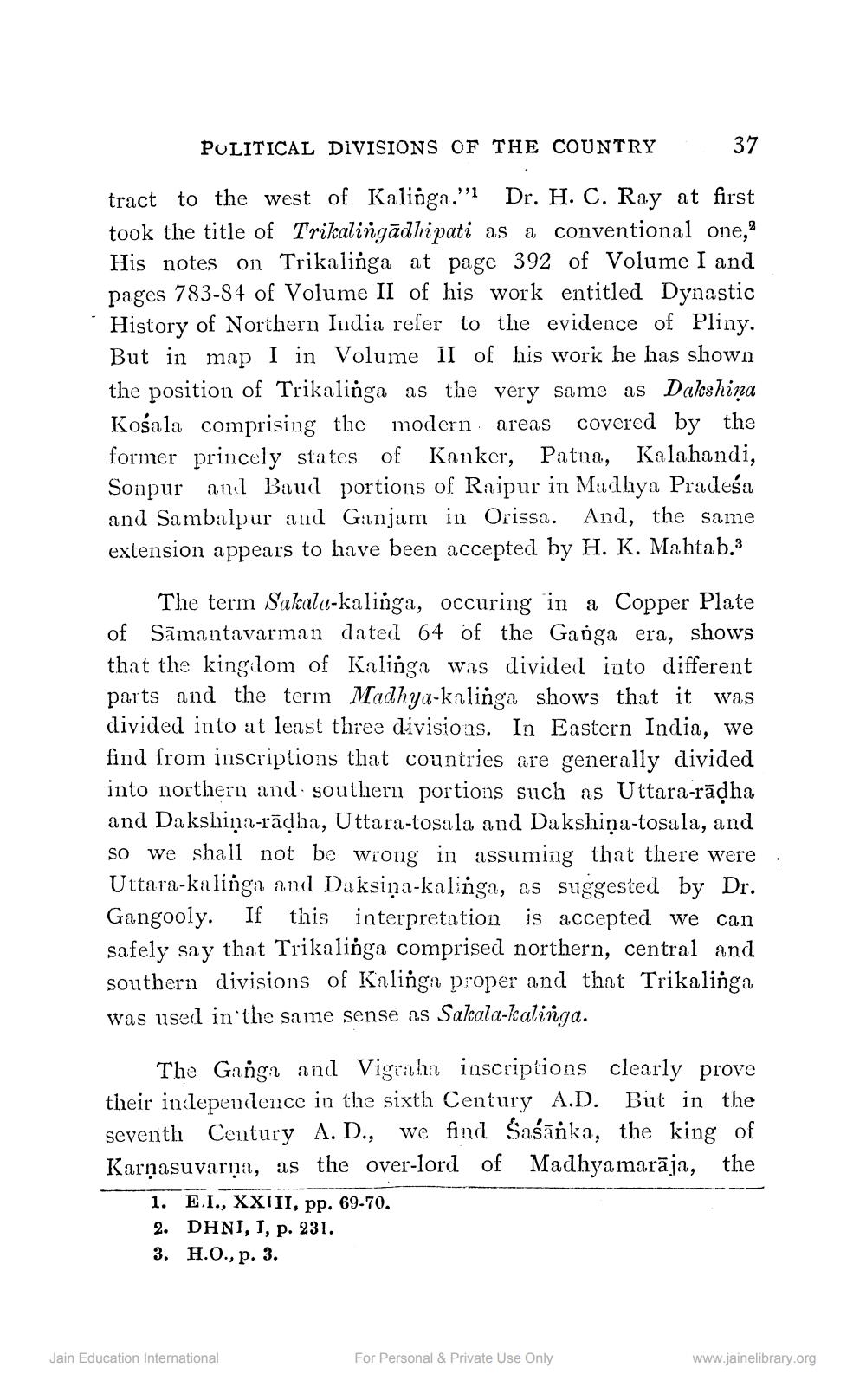________________
PULITICAL DIVISIONS OF THE COUNTRY
37
tract to the west of Kalinga.'' Dr. H. C. Ray at first took the title of Trikalingādhipati as a conventional one, His notes on Trikalinga at page 392 of Volume I and pages 783-84 of Volume II of his work entitled Dynastic History of Northern India refer to the evidence of Pliny. But in map I in Volume II of his work he has shown the position of Trikalinga as the very same as Dakshina Košala comprising the modern areas covered by the former princely states of Kanker, Patna, Kalahandi, Sonpur and Baud portions of Raipur in Madhya Pradeśa and Sambalpur and Ganjam in Orissa. And, the same extension appears to have been accepted by H. K. Mahtab.3
The term Sakala-kalinga, occuring in a Copper Plate of Sāmantavarman dated 64 of the Ganga era, shows that the kingilom of Kalinga was divided into different parts and the term Madhya-kalinga shows that it was divided into at least three divisions. In Eastern India, we find from inscriptions that countries are generally divided into northern and southern portions such as Uttara-rādha and Dakshiņa-rādha, Uttara-tosala and Dakshiņa-tosala, and so we shall not be wrong in assuming that there were: Uttara-kalinga and Da ksiņa-kalinga, as suggested by Dr. Gangooly. If this interpretation is accepted we can safely say that Trikalinga comprised northern, central and southern divisions of Kalinga proper and that Trikalinga was used in the same sense as Sakala-kalinga.
The Ganga and Vigraha inscriptions clearly prove their indlependence in the sixth Century A.D. But in the seventh Century A. D., we find Saśāňka, the king of Karņasuvarna, as the over-lord of Madhyamarāja, the
1. E.I., XXIII, pp. 69-70. 2. DHNI, I, p. 231. 3. H.O., p. 3.
Jain Education International
For Personal & Private Use Only
www.jainelibrary.org




